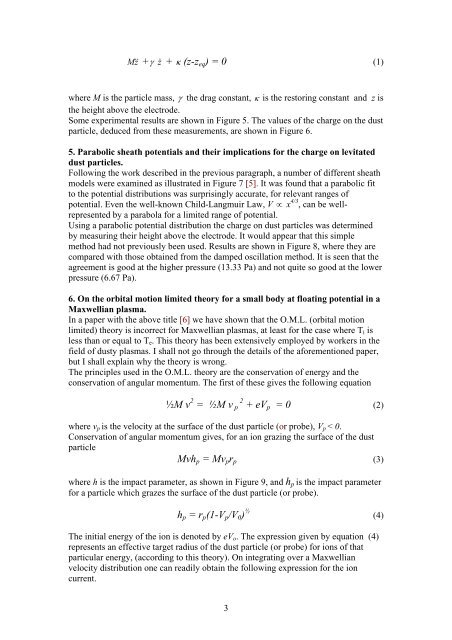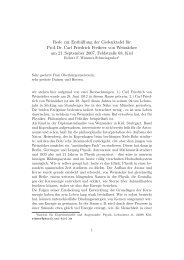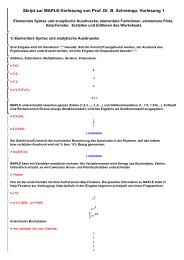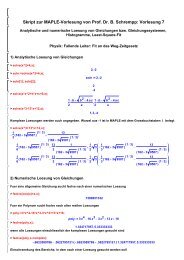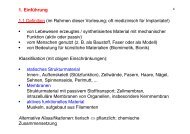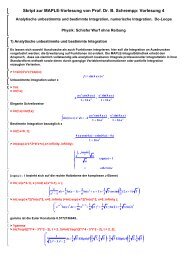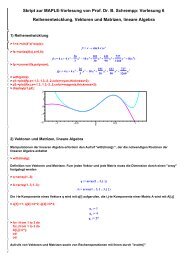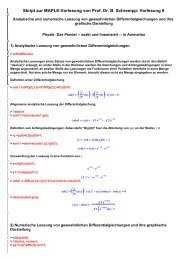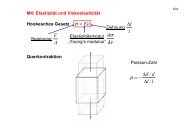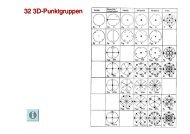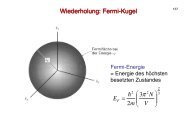Some Researches on Dusty Plasmas
Some Researches on Dusty Plasmas
Some Researches on Dusty Plasmas
You also want an ePaper? Increase the reach of your titles
YUMPU automatically turns print PDFs into web optimized ePapers that Google loves.
M & z<br />
+γ z& + κ (z-z eq ) = 0 (1)<br />
where M is the particle mass, γ the drag c<strong>on</strong>stant, κ is the restoring c<strong>on</strong>stant and z is<br />
the height above the electrode.<br />
<str<strong>on</strong>g>Some</str<strong>on</strong>g> experimental results are shown in Figure 5. The values of the charge <strong>on</strong> the dust<br />
particle, deduced from these measurements, are shown in Figure 6.<br />
5. Parabolic sheath potentials and their implicati<strong>on</strong>s for the charge <strong>on</strong> levitated<br />
dust particles.<br />
Following the work described in the previous paragraph, a number of different sheath<br />
models were examined as illustrated in Figure 7 [5]. It was found that a parabolic fit<br />
to the potential distributi<strong>on</strong>s was surprisingly accurate, for relevant ranges of<br />
potential. Even the well-known Child-Langmuir Law, V ∝ x 4/3 , can be wellrepresented<br />
by a parabola for a limited range of potential.<br />
Using a parabolic potential distributi<strong>on</strong> the charge <strong>on</strong> dust particles was determined<br />
by measuring their height above the electrode. It would appear that this simple<br />
method had not previously been used. Results are shown in Figure 8, where they are<br />
compared with those obtained from the damped oscillati<strong>on</strong> method. It is seen that the<br />
agreement is good at the higher pressure (13.33 Pa) and not quite so good at the lower<br />
pressure (6.67 Pa).<br />
6. On the orbital moti<strong>on</strong> limited theory for a small body at floating potential in a<br />
Maxwellian plasma.<br />
In a paper with the above title [6] we have shown that the O.M.L. (orbital moti<strong>on</strong><br />
limited) theory is incorrect for Maxwellian plasmas, at least for the case where T i is<br />
less than or equal to T e . This theory has been extensively employed by workers in the<br />
field of dusty plasmas. I shall not go through the details of the aforementi<strong>on</strong>ed paper,<br />
but I shall explain why the theory is wr<strong>on</strong>g.<br />
The principles used in the O.M.L. theory are the c<strong>on</strong>servati<strong>on</strong> of energy and the<br />
c<strong>on</strong>servati<strong>on</strong> of angular momentum. The first of these gives the following equati<strong>on</strong><br />
½M v 2 = ½M v p 2 + eV p = 0 (2)<br />
where v p is the velocity at the surface of the dust particle (or probe), V p < 0.<br />
C<strong>on</strong>servati<strong>on</strong> of angular momentum gives, for an i<strong>on</strong> grazing the surface of the dust<br />
particle<br />
Mvh p = Mv p r p (3)<br />
where h is the impact parameter, as shown in Figure 9, and h p is the impact parameter<br />
for a particle which grazes the surface of the dust particle (or probe).<br />
h p = r p (1-V p /V 0 ) ½ (4)<br />
The initial energy of the i<strong>on</strong> is denoted by eV o . The expressi<strong>on</strong> given by equati<strong>on</strong> (4)<br />
represents an effective target radius of the dust particle (or probe) for i<strong>on</strong>s of that<br />
particular energy, (according to this theory). On integrating over a Maxwellian<br />
velocity distributi<strong>on</strong> <strong>on</strong>e can readily obtain the following expressi<strong>on</strong> for the i<strong>on</strong><br />
current.<br />
3


